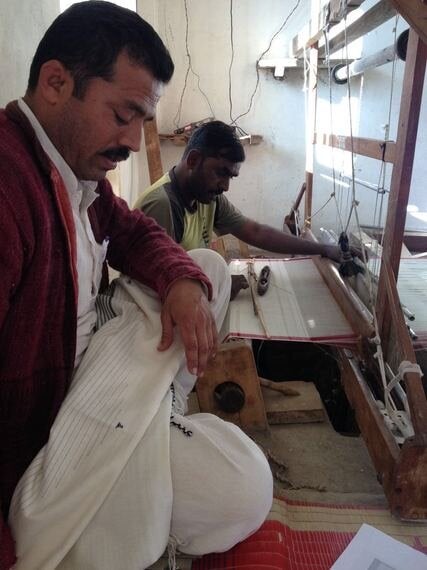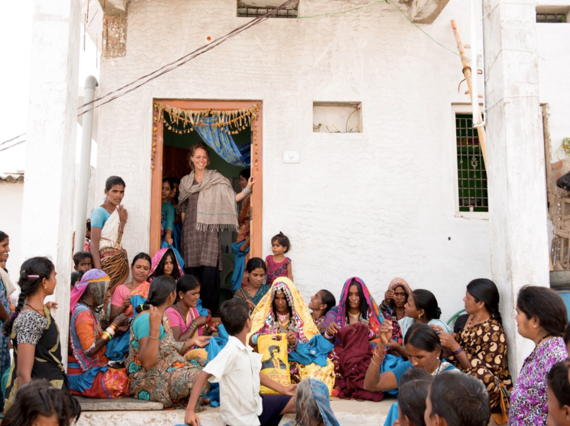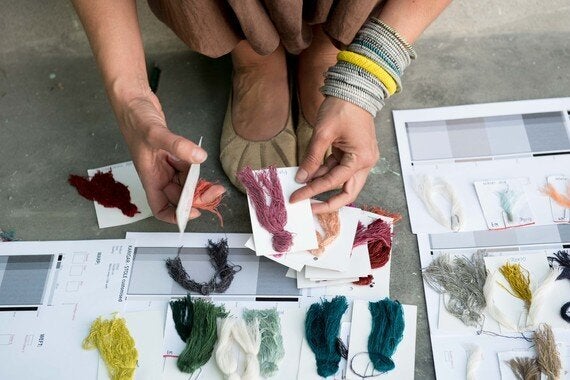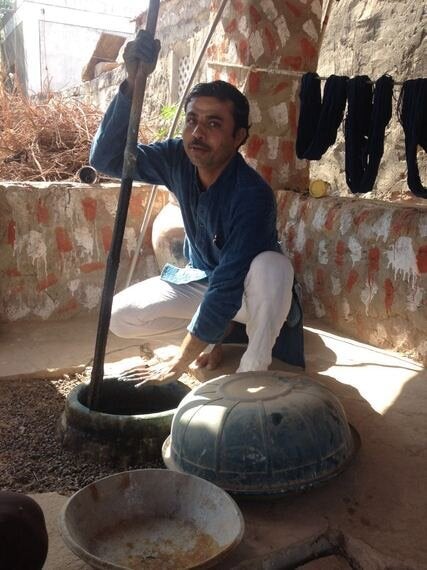It's hot and dusty. But Vankar Shamji Vishram looks unfazed. His traditional handwoven outfit remains crisp and white through the day, as he confidently strides through his village of Bhujodi in Kutch like a master, encouraging the children to be part of the creative process. Here, nobody is an outsider when it comes to making textiles.
During a visit to Kutch earlier this year, we discovered master craftsman Shamji -- a born weaver, who creates not to survive but to be an expert at what he does. Shamji and his brothers have complementary skills and a talent that is so ingrained that anything they make by hand is a masterpiece. A skill passed on to him by his award winning ancestors, weaving is Shamji's heritage. It's what he knows best and it's what he will pass on to his future generations.

Every single day, designers, students and treasure seekers from around the world visit Shamji to know more about what he does and eventually, to work with him and learn. Shamji graciously accompanies us all on the guided tour through his home and village, stopping to break for a warm home-cooked meal.
But Shamji is one of the many immensely talented craftspeople who contribute to the growing industry of sustainable fashion through their work. Craftsmanship is integral to the Indian landscape, and still largely an unorganised sector. According to Indian NGO Dasra, an estimated 7 million people work in the craft industry (with unofficial sources saying that number is 200 million). These skilled individuals are mostly creating for local markets, but few are also serving a larger base of international consumers.
World over, there is a return to craftsmanship and the creative process. At the recent Milan Fashion Week, Miuccia Prada's collection paid homage to craftsmanship and vintage fabrics. "I want to play my part in keeping craftsmanship alive," she said. Embroidery and embellishments were central to many collections on showcase there at Milan, hinting at artisanal skills and a return to craftsmanship.
But while this focus on handmade and artisans may only be a fad in the current fast-fashion industry, we at Karigar have made this our way of life. Having chosen to work with handmade textiles, our brand looks at helping heritage find its way to new markets by giving it a new look, feel and identity. Shapeshifting Heritage, is how we prefer to call it.

We team up with rural artisans who have the technical skills and know how and through our understanding of the market, we use design to co-create a product that appeals to global consumers. It's a marriage of design and craft that is at the forefront of all our products. And in finding the right artisans to work with among this sea of 200 million craftspeople lies our challenge. Will it work? How do we create a product that will sell? How do we design so that the technique doesn't loose any of its intrinsic traditional qualities? And how do we find artisans with the right capability to translate our design vision?

This renewed global focus on craftsmanship will make an impact if it attracts more international or even local designers and brands to co-create with these skilled artisans and help expand the market for their craft.
While most artisans have the ability to create, they lack the design and marketing skills to make their crafts appeal to a wider global audience. These are the ones who need all the help they can get in the form of training, new designs or even that leap of faith to take a chance and work with them. And that's when the Indian craft industry will move from fringes to the forefront.
Visits like the one to Kutch open up possibilities for young brands like ours. While it may not always end in an actual product being created, a day with individuals like Shamji give insights into the industry.

As we stop to watch Shamji's brother dyeing indigo, he smells and tastes the indigo to check if it's in the right phase of fermentation.
For some they craft to survive, others strive for perfection. And some, like Shamji, live it.
Photo credits: Jolijn Fiddelaers & Marloes van Doorn
